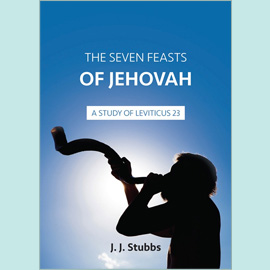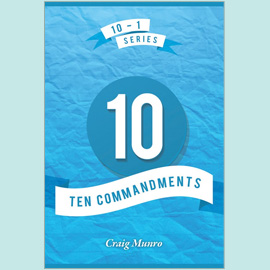Peter explains the healing of the paralytic (Acts 3.1-4.22)
Context
The witness to the risen Saviour had begun, as outlined in chapter 2. The disciples were still attending the Temple. Peter and John went there with the Jewish congregation, some of whom were followers of Christ, some merely practising Jews. Chapter 2 has shown the disciples witnessing with the Holy Spirit’s power to the fact and meaning of the resurrection and exaltation of Christ. Chapters 3 and 4 deal with the subject of the power of the exalted Christ to meet the need of helpless people. The first case of helplessness is a physical one. The man who was helped was congenitally handicapped, a familiar figure as he begged for a little money from the religious people who visited the Temple. Since the Law of Moses enjoined the exercise of charity towards the weak and poor, the Temple was an obvious place to go when begging. Two factors make him a significant object-lesson: he was well known, and his disability was very conspicuous.
Something greater than the power to walk
The crippled beggar would have been glad of a few pence from Peter and John as they came to afternoon prayers. He was no doubt expectant when they paused and said, "Look on us!". But Peter and John had something better than money, better even than the gold which Peter mentioned and which the beggar had surely never received from any worshipper!
We should not miss Peter’s assertion: "But such as I have give I thee". A healing would have been wonderful, beyond anyone’s imagination. But a healing in the name of Jesus Christ of Nazareth was even more splendid. On the cross He was placarded as Jesus of Nazareth; here He is announced as Jesus Christ of Nazareth, still the same Jesus, but exalted as both Lord and Christ (compare 2.36). It is still a tremendous privilege for Christian witnesses to know that the exalted Christ is able to meet the deepest needs of people. We have something of infinite value to share with needy people.
The healing was instantaneous and gloriously complete. No physiotherapy sessions were needed. He jumped up, stood, walked, leapt, and praised God. And he went into the Temple. The power that healed was the power that made him a worshipper. The same power still makes radically blessed changes in the condition of those who put their trust in Christ. We should be able to speak with confidence and clarity.
The healing was a powerful witness in itself. It was good to preach that the exalted Christ could forgive people and bring them near as worshippers, but such claims might be judged to be open to question. What could not be questioned was a physical healing of such a dramatic nature, performed upon such an impossible case. The principle being exemplified here is the same as in Luke 5, where the Lord Jesus said to the paralysed man, "Man, thy sins are forgiven thee" (v.20). When challenged by the scribes and Pharisees He explained that He was using the visible healing to display His power to impart the spiritual forgiveness.
Peter’s explanation
Peter starts where he did in chapter 2. God has glorified His Servant Jesus: in chapter 2 the coming of the Holy Spirit certified this. Here the healing of the cripple certified it. We note the power of His name. There can be no suggestion that people should praise the sensational powers of the preacher-healers! The power is that of God, the God of Israel and the patriarchs. Peter’s duty is to highlight the need for people to change their attitude to Christ. Hence he accuses the leaders again of their guilt in hounding Jesus to death and preferring a murderer. He says their guilt is accentuated by the fact that Pilate’s intention was to acquit Jesus, so their guilt is greater than Pilate’s. It is further accentuated in that, having secured the release of a man who deprived others of life; they ensured the death of Him who is the source of life. The power that healed the cripple, Peter asserts, is the power of the risen Christ, received through faith.
The implications are clear. Peter says the suffering of Jesus is what the prophets foretold would befall the Christ. But now that God has overturned the verdict of the Jewish leaders by raising His Christ there is blessing available through Christ, as promised in Genesis.
The sequel - Peter before the Jewish leaders
Peter and John were then arrested by the Jewish leaders. All the most powerful men in Jerusalem were present when Peter and John were brought before them to give an account of their activities. Prominent among them were the Sadducees, who were particularly annoyed because of the burning issue of Jesus being raised from the dead. The Sadducees, we remember, did not believe in resurrection.
We note that it was as filled with the Holy Spirit that Peter had the courage to speak out in explanation. The clear fact around which all the debate revolved was the good deed done to the disabled man. Peter repeats that this was done by the power of Jesus Christ of Nazareth. He repeats his charge of their guilt in the crucifixion, and God’s reversal of their verdict. He quotes Psalm 118.22 as prophetic: Jesus is the stone rejected by the builders who has become the head of the corner.
But we must not miss the climax of Peter’s address. Not only is Jesus raised and exalted but He is the only Saviour. If we are to be saved it must be through Him. There is no middle ground between rejecting Christ and accepting Him as the only Saviour.
Peter’s parting shot
Being unable to find an answer to Peter’s preaching, the leaders decided to threaten the preachers and let them go. There was one condition: they must not preach or teach at all in the name of Jesus - that name - again!
Peter’s reply is succinct. The choice is whether to obey God or men. God has given them this message, based on what they have seen and heard, based on facts. Can religious leaders in Israel seriously expect men to disobey God in order to please men?
The emphasis on facts, things seen and heard, is a central theme in the early church. This is not myth, or wishful thinking; it is fact, based on evidence, which we ignore at our peril.
To be continued.









